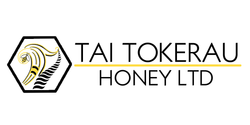Mānuka Honey is collected by our bees from the flowers of the Mānuka Bush, Leptospermum scoparium, a species native to Aotearoa (New Zealand).
While the term "Mānuka" is recognised by Oxford Languages as of Māori origin and written records date back to the mid-19th Century, the Mānuka plant itself is a taonga (treasure) and is deeply embeded in Maori culture and in rongoā Maori (Maori medicine). Not only was the timber useful, the infusions of the leaves and inner bark were used for stomach ailments and fevers, while topical uses include the treatment of burns and skin infections
There are so many different honey labels available these days, with so many different prices it can be hard to understand what you are buying! So let's explore this a little.
To start with, Mānuka Honey can be classified into either Monofloral Mānuka Honey or Multifloral Mānuka Honey.
- Monofloral means that the honey is almost completely made from the nectar of one type of flower.
- Multifloral means that the honey is foraged from multiple (many different) flowers as the bees fly around looking for food.
For our Multifloral Mānuka Honey, this means that Mānuka is the main part of the honey, however there are also other honey/nectar types that the bees have collected on their journey. It still has the signature Mānuka flavour, and is great as an everyday honey or as a sugar replacement. Adding our Multifloral Mānuka Honey to your everyday diet can help support a healthy immune system.
Monofloral Mānuka Honey has to undergo more accredited Laboratory tests to ensure that you are receiving a pure and authentic product. In order to be classified as Monofloral Mānuka Honey by New Zealand’s Ministry for Primary Industries (MPI), the honey has to meet the appropriate thresholds of four chemical markers and a DNA marker. It can then be graded based on the level of another active ingredient, Methylglyoxal (MGO). Here at Tai Tokerau Honey, we take it a step further, and are accredited members of the Unique Mānuka Factor (UMF™) Honey Association (UMFHA).
The UMFHA has been at the forefront of almost three decades of world-leading research to understand the benefits and quality management of Mānuka honey. They have identified 2,300+ natural compounds in New Zealand Mānuka honey that contribute to its unique taste, texture and support of health & wellness – and make it the best honey in the world.
To produce Mānuka honey that can be certified as the world’s finest quality, New Zealand’s honey producers have to adhere to a unique quality system. The UMFHA are the keepers of that system. You can check out their website here for more information.
No other honey undergoes such rigorous testing by a bee-keeper’s country mile. The UMF™ system builds on the New Zealand government’s mānuka honey identification tests by ensuring certainty around purity, potency, authenticity and freshness – making the UMF™ rating the only option for anyone seeking independent assurance that their purchase will support their health and wellness.
What's on the label?
There are many labels out there, and it is easy as a consumer to be confused, so let's look at a few key things to check.
1. Look for the UMF™, this rating system means you can be reassured you are purchasing a quality product. The UMF range starts at a UMF 5+, and can be seen up to UMF 30+. The higher the number, the better the quality.
2. If you can't find UMF rated honey, MGO is another safe alternative, but be aware that the numbers measure different things! So while the higher the number is still better, for example, a UMF 5+ is the equivalent of a MGO 83+

3. Look for information that indicates the honey is produced and packaged in New Zealand. Generally, there will be a "produced by" address, if this is not in New Zealand, and the label has something like "Made with New Zealand Honey", it is highly likely that the honey has been exported from New Zealand in bulk, and packed in another facility. This can open up opportunities for the honey to be mixed with other things, and you may not be receiving a pure product!
As we have our own beehives, extraction plant and packaging premises, we are proud to be able to guarantee that you are receiving a top quality product straight from our hives to your hands!
Any questions - feel free to contact us!

